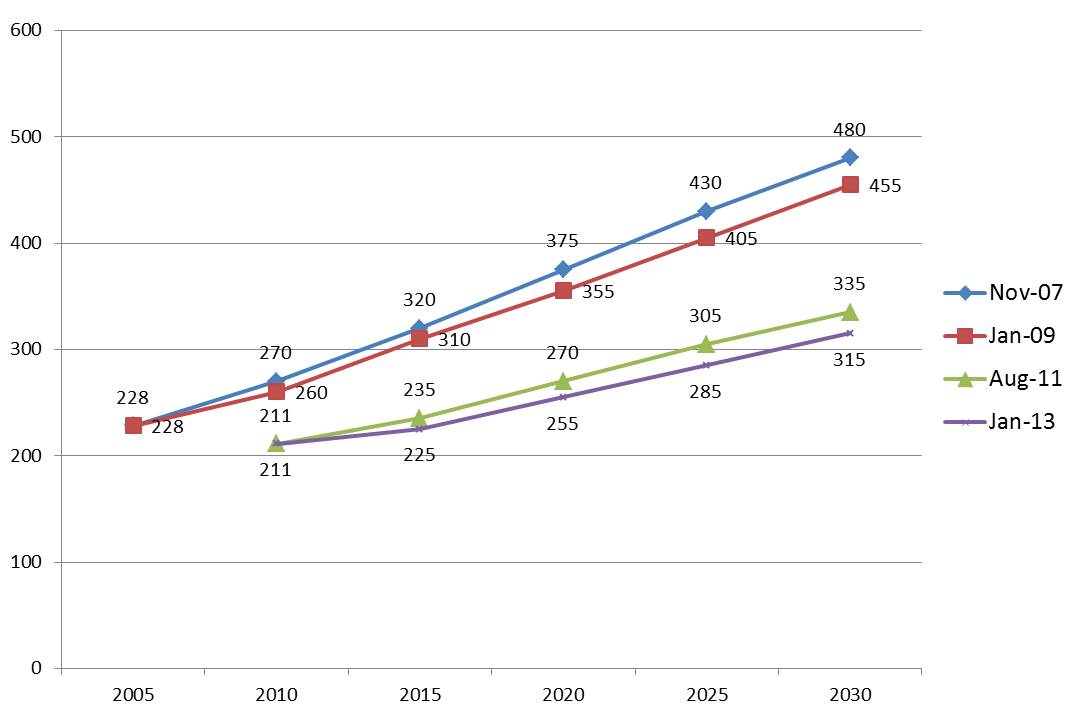Air travel forecasts have been cut by 35% in the last six years. Why do we believe today's numbers?
In the last six years the government has produced four different forecasts for air passenger numbers. Each successive estimate has been substantially lower than the last. In January of this year the Department of Transport published an estimate of 315m passengers in 2030 compared to a figure of 480m in November 2007, just fifty months earlier. As the UK starts a new round of animated discussion about expanding Heathrow we might bear in mind that forecasts for air travel have been consistently too high in recent years, even for the immediate future. 2009 estimates about travel numbers in the following year were over 15% too high.
Today's report from Howard Davies' Airport Commission proudly boasts that its forecasts - which are broadly the same as those of the 2013 Department for Transport figures - have a far lower margin of error than all previous estimates. (Please see figure 4.3 in the Davies report). They are more certain than ever of the accuracy of their central forecast. In the face of the huge and completely unpredicted reduction in forecast demand for aviation over the last six years, isn't about time that we considered the possibility that the need for aviation has begun to stagnate?
(Past articles on the troubled logic behind Heathrow expansion plans are here, here and here.)
Whether or not the UK needs new runways depends almost exclusively on future demand for air travel. The five decades between 1950 and 2000 saw typical growth of nearly five per cent a year. However 2012 passenger numbers were no higher than in 2005. Is this effect of economic difficulties around the world or does it represent a clear sign of a maturing market? The Department for Transport thinks growth will return once economic difficulties are behind the UK. But it has nevertheless sharply cut its forecasts since 2007. This year’s estimates are a third lower than those provided just fifty months ago. Travel numbers are expected to be permanently lower than they were.
Forecasts of number of passengers using UK airports, millions per year
Source: Department for Transport forecasts
Are the new lower forecasts likely to be accurate? Or have we reached peak air travel in the same way as we are experiencing a plateau in the needs for surface transport? The latest estimate suggests a 40% rise in air travel in the next seventeen years, an increase of over 2% a year. As real incomes continue to fall, I think the Department for Transport is probably still being too bullish. Basing the case for a third runway at Heathrow on forecasting techniques that have proved spectacularly wrong in the last half decade looks a little foolish to me.
